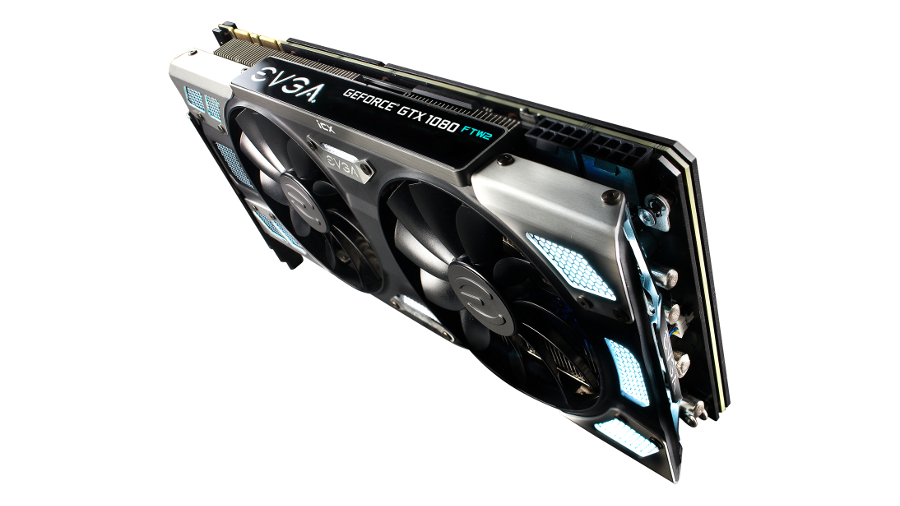EVGA redesigns its graphics cards following overheating concerns
GeForce GTX 10-series cards get improved cooling and sensors

Following a well-publicized overheating issue which hit EVGA’s GeForce GTX 10-series graphics cards late last year, the company has taken further action to calm any remaining fears with the launch of refreshed cards that feature an improved cooling system.
If you missed this, EVGA quite literally came under fire last autumn, because these video cards were overheating to the point of actually producing flames, or so reports and YouTube clips claimed.
And while an immediate fix was applied, this is the graphics card vendor’s longer-term response, giving 10 cards in total – across GTX 1060, 1070 and 1080 models – new enhanced iCX cooling technology (as opposed to the previous ACX solution), which incorporates a battery of sensors to help warn the user if there is a potential problem.
There are ten sensors in total dotted about the card, and these are hooked up to EVGA’s software (Precision XOC) which shows real-time temperature readouts alongside the usual clock speed and other monitoring details.
And for an at-a-glance indication of how cool temperatures are, the firm has incorporated a trio of LED lights onto the side of the card – for the GPU, memory and power components respectively – which can be customized to go red when certain temperatures are reached.
- Prove your geek cred by switching to one of the best Linux distros
Every fin is awesome
EVGA reveals that it has also introduced a redesigned backplate, along with a new fin design which optimizes airflow for better cooling. Asynchronous fan control is now on board for the twin fans, meaning they can spin at different speeds, with the left fan cooling the GPU and the right fan the memory plus power components.
If any of the array of sensors pick up on an overheating issue, the appropriate fan can be kicked into a higher gear. There’s also now an additional fuse on the card as an extra safeguard.
Get daily insight, inspiration and deals in your inbox
Sign up for breaking news, reviews, opinion, top tech deals, and more.
In terms of pricing, the refreshed cards will be $30 more (around £25, AU$40) than their predecessors, and if you have an old ACX-cooled GPU you can trade that in for a new iCX model, but that will set you back $99 (around £80, AU$130).
Clearly, this is a more effective fix than EVGA’s initial solution for worried customers last November, which was essentially to ramp up the default fan speed (of course, at the cost of extra noise), and offer optional thermal pads to those who requested them (although the company insisted these weren’t necessary to prevent overheating).
It’s good to see the graphics vendor taking the situation seriously with this full cooling redesign, although it’s debatable how much trust the brand may have already lost due to this episode. These sort of things have a habit of lodging in the back of your mind.
So, do you think EVGA has reacted well here? And if you own an affected card, do you reckon the fee attached to the iCX upgrade is a fair one? As ever, let us know your thoughts in the comments section below.
Via: The Verge
- These are the best PC games you can play in 2017
Darren is a freelancer writing news and features for TechRadar (and occasionally T3) across a broad range of computing topics including CPUs, GPUs, various other hardware, VPNs, antivirus and more. He has written about tech for the best part of three decades, and writes books in his spare time (his debut novel - 'I Know What You Did Last Supper' - was published by Hachette UK in 2013).